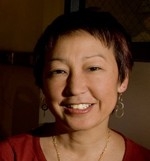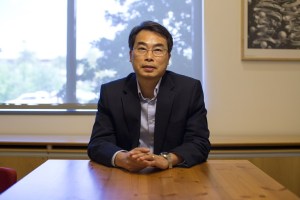“Curing the Incurable”. That was the theme for the first annual Center for Definitive and Curative Medicine (CDCM) Symposium held last week at Stanford University, in Palo Alto, California.
The CDCM is a joint initiative amongst Stanford Healthcare, Stanford Children’s Health and the Stanford School of Medicine. Its mission is to foster an environment that accelerates the development and translation of cell and gene therapies into clinical trials.
The research symposium focused on “the exciting first-in-human cell and gene therapies currently under development at Stanford in bone marrow, skin, cardiac, neural, pancreatic and neoplastic diseases.” These talks were organized into four different sessions: cell therapies for neurological disorders, stem cell-derived tissue replacement therapies, genome-edited cell therapies and anti-cancer cell-based therapies.
A few of the symposium speakers are CIRM-funded grantees, and we’ll briefly touch on their talks below.
Targeting cancer
The keynote speaker was Irv Weissman, who talked about hematopoietic or blood-forming stem cells and their value as a cell therapy for patients with blood disorders and cancer. One of the projects he discussed is a molecule called CD47 that is found on the surface of cancer cells. He explained that CD47 appears on all types of cancer cells more abundantly than on normal cells and is a promising therapeutic target for cancer.
“CD47 is the first gene whose overexpression is common to all cancer. We know it’s molecular mechanism from which we can develop targeted therapies. This would be impossible without collaborations between clinicians and scientists.”
At the end of his talk, Weissman acknowledged the importance of CIRM’s funding for advancing an antibody therapeutic targeting CD47 into a clinical trial for solid cancer tumors. He said CIRM’s existence is essential because it “funds [stem cell-based] research through the [financial] valley of death.” He further explained that CIRM is the only funding entity that takes basic stem cell research all the way through the clinical pipeline into a therapy.
Improving bone marrow transplants
Next, we heard a talk from Judith Shizuru on ways to improve current bone-marrow transplantation techniques. She explained how this form of stem cell transplant is “the most powerful form of cell therapy out there, for cancers or deficiencies in blood formation.” Inducing immune system tolerance, improving organ transplant outcomes in patients, and treating autoimmune diseases are all applications of bone marrow transplants. But this technique also carries with it toxic and potentially deadly side effects, including weakening of the immune system and graft vs host disease.
Shizuru talked about her team’s goal of improving the engraftment, or survival and integration, of bone marrow stem cells after transplantation. They are using an antibody against a molecule called CD117 which sits on the surface of blood stem cells and acts as an elimination signal. By blocking CD117 with an antibody, they improved the engraftment of bone marrow stem cells in mice and also removed the need for chemotherapy treatment, which is used to kill off bone marrow stem cells in the host. Shizuru is now testing her antibody therapy in a CIRM-funded clinical trial in humans and mentioned that this therapy has the potential to treat a wide variety of diseases such as sickle cell anemia, leukemias, and multiple sclerosis.
Tackling stroke and heart disease
 We also heard from two CIRM-funded professors working on cell-based therapies for stroke and heart disease. Gary Steinberg’s team is using human neural progenitor cells, which develop into cells of the brain and spinal cord, to treat patients who’ve suffered from stroke. A stroke cuts off the blood supply to the brain, causing the death of brain cells and consequently the loss of function of different parts of the body. He showed emotional videos of stroke patients whose function and speech dramatically improved following the stem cell transplant. One of these patients was Sonia Olea, a young woman in her 30’s who lost the ability to use most of her right side following her stroke. You can read about her inspiring recover post stem cell transplant in our Stories of Hope.
We also heard from two CIRM-funded professors working on cell-based therapies for stroke and heart disease. Gary Steinberg’s team is using human neural progenitor cells, which develop into cells of the brain and spinal cord, to treat patients who’ve suffered from stroke. A stroke cuts off the blood supply to the brain, causing the death of brain cells and consequently the loss of function of different parts of the body. He showed emotional videos of stroke patients whose function and speech dramatically improved following the stem cell transplant. One of these patients was Sonia Olea, a young woman in her 30’s who lost the ability to use most of her right side following her stroke. You can read about her inspiring recover post stem cell transplant in our Stories of Hope.
Joe Wu followed with a talk on adult stem cell therapies for heart disease. His work, which is funded by a CIRM disease team grant, involves making heart cells called cardiomyocytes from human embryonic stem cells and transplanting these cells into patient with end stage heart failure to improve heart function. His team’s work has advanced to the point where Wu said they are planning to file for an investigational new drug (IND) application with the US Food and Drug Administration (FDA) in six months. This is the crucial next step before a treatment can be tested in clinical trials. Joe ended his talk by making an important statement about expectations on how long it will take before stem cell treatments are available to patients.
He said, “Time changes everything. It [stem cell research] takes time. There is a lot of promise for the future of stem cell therapy.”



I was hoping the neurological disease segment would address degenerative diseases like MS, ALS, Parkinson’s, Alzheimer’s, dementia. These conditions also have good potential for treatment with cellular therapy. Is CDCM going to address these incurable conditions?